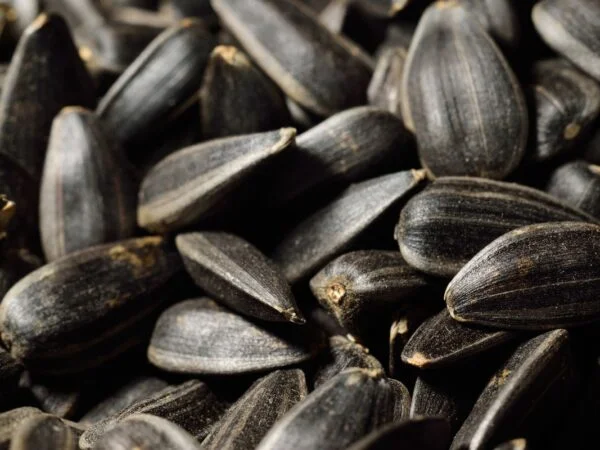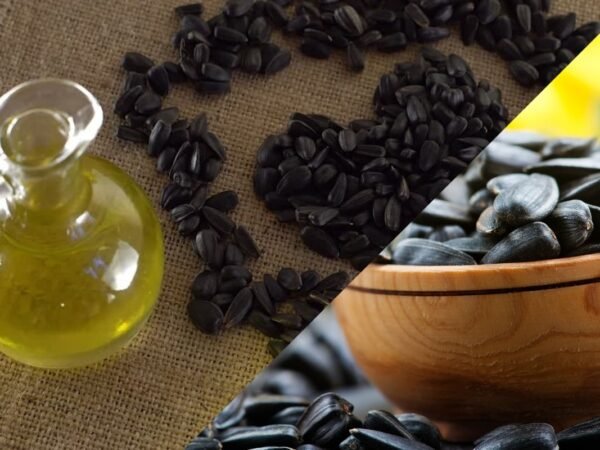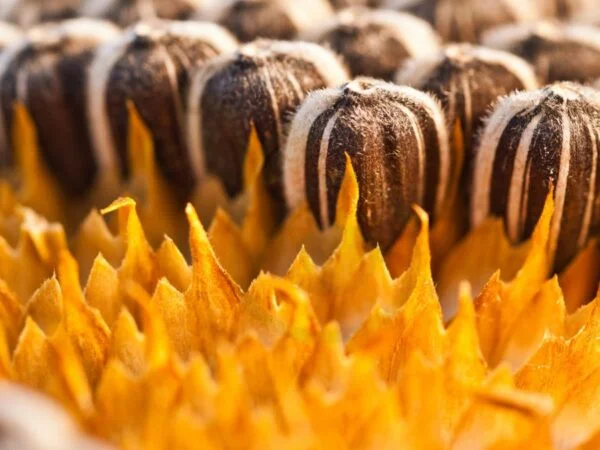Sunflowers can brighten up any room with their vibrant colors and bring a touch of nature indoors. Keeping sunflowers alive in a vase is essential for maintaining the beauty and freshness of these flowers, enhancing the ambiance of your living space. Long-lasting sunflowers also provide an opportunity to enjoy their beauty for an extended period, adding value to your home decor.
Fresh sunflowers in a vase serve as a natural design element that can elevate the aesthetic appeal of your home. By learning how to maintain their freshness, you can create stunning floral arrangements that enhance the overall ambiance and atmosphere within your living space. The importance lies not only in preserving their life, but also in maximizing their decorative impact within your home.
Benefits of Long-Lasting Sunflowers
Long-lasting sunflowers at home offer numerous benefits, including cost-effectiveness by reducing the frequency of buying new flowers. This not only saves money but also reduces waste from discarded wilted flowers, contributing positively to environmental sustainability.
In addition to financial savings and environmental benefits, fresh sunflowers infuse any living space with positivity and energy. Their presence can uplift moods and create a welcoming atmosphere for residents and visitors alike. Moreover, maintaining sunflower freshness allows you to experiment with different arrangements over time without constantly replacing them.
Key Takeaways
- Select sunflowers at their peak by choosing those with firm stems, vibrant petals, and closed buds for longer vase life.
- Prior to placing sunflowers in a vase, remove any leaves that will be submerged in water and cut the stems at a 45-degree angle to facilitate water absorption.
- Change the water every 2 days and add floral preservative to keep the sunflowers hydrated and fresh.
- Keep sunflowers in a cool area away from direct sunlight and drafts to prolong their lifespan in the vase.
- Regularly trim the stems and change the water to prevent bacterial growth and maintain the sunflowers' vitality.
- As a beginner, remember to start with fresh, high-quality sunflowers and follow these care tips to enjoy their beauty indoors for an extended period.
Selecting Prime Sunflowers
Importance of Hydration
Before arranging sunflowers in a vase, it's crucial to ensure that they are well-hydrated. This step is essential for prolonging the flowers' vase life and keeping them looking fresh. By hydrating the sunflowers before cutting and arranging them, you can maximize their water absorption capacity.
Ensuring that the sunflowers are properly hydrated involves submerging their stems in water for a specific duration. This allows the flowers to absorb as much water as possible, ensuring that they remain vibrant and healthy once placed in a vase.
Proper hydration also prevents wilting and enhances the overall appearance of the sunflowers, making them more visually appealing when displayed indoors.
Submerging Technique
To effectively hydrate sunflowers, begin by filling a clean container with room-temperature water. Submerge the entire length of each stem in the water, ensuring that no air pockets are trapped within the stems.
Allowing ample time for pre-soaking is crucial to ensure optimal hydration. Ideally, leave the sunflowers submerged for several hours or overnight before proceeding with cutting and arranging them in a vase.
By following this pre-cutting hydration process diligently, you can significantly enhance the longevity of your sunflower arrangements while maintaining their freshness and vibrancy indoors.
Tools and Methods
When preparing sunflowers for placement in a vase, using appropriate tools such as sharp scissors or floral shears is essential to prevent damage to the stems. Blunt tools can crush or split delicate flower stems, hindering their ability to absorb water effectively.
It's important to make clean cuts on an angle at about 45 degrees near the base of each stem using sharp tools. This technique creates maximum surface area on each stem for efficient water uptake while preventing blockages caused by crushed tissue.
Avoiding crushing or splitting during cutting not only ensures proper hydration but also minimizes stress on the flowers, helping maintain their structural integrity over time.
Preparing the Vase
Fill with Tepid Water
Using tepid water is crucial. Tepid water, which is neither too hot nor too cold, helps to prolong the lifespan of sunflowers. The ideal temperature range for filling the vase with water is between 100 and 110 degrees Fahrenheit. This temperature range prevents shock to the flowers, ensuring they remain fresh and vibrant for a longer period. Extreme temperatures can cause stress to the flowers, leading to wilting and premature decay.
Sunflowers are sensitive to extreme changes in temperature, so it's important to avoid using very cold or very hot water when preparing the vase. By utilizing tepid water within the recommended temperature range, you provide an environment that supports optimal flower health and longevity.
Vase Cleaning Frequency
Maintaining flower longevity involves regular cleaning of vases. It's essential to clean your vase every two to three days or whenever you change the water. Regular cleaning helps remove bacteria and debris from the vase that could potentially harm your sunflowers' lifespan. Bacteria build-up can clog stems and prevent proper hydration, leading to wilting and decay of your sunflowers.
To maintain a clean vase, rinse it thoroughly with warm soapy water after each use before refilling it with fresh tepid water for your sunflowers. Consider adding a few drops of bleach or hydrogen peroxide into warm soapy water when cleaning vases as these solutions effectively kill bacteria without harming your flowers.
Trimming Sunflower Stems
Proper Trimming Angle
When cutting sunflower stems, it's crucial to trim them at a 45-degree angle. This angle allows for better water absorption, as it creates a larger surface area for the stem to intake water. By trimming at an angle, you can prevent air bubbles from forming in the stem, which can block water uptake and lead to wilting.
Ensuring that the sunflower stems are cut at an appropriate angle is essential for their longevity in a vase. This simple technique maximizes the contact area between the stem and water, promoting efficient hydration. Picture this: just like how drinking from a wider glass makes it easier to quench your thirst quickly, cutting sunflower stems at an angle helps them drink up more water.
Ideal Stem Length
Determining the ideal length when cutting sunflower stems depends on several factors such as vase size and desired arrangement height. The general rule of thumb is to trim each stem so that they are roughly one and a half times taller than the vase itself. This ensures that there's enough stem submerged in water while also allowing for an aesthetically pleasing display.
Achieving balance between aesthetics and functionality with stem length is key when arranging sunflowers in a vase. If you have a tall vase or want your sunflowers to stand out prominently, longer stems would be suitable. On the other hand, if you're aiming for a compact arrangement or have a smaller vessel, shorter stems might be more fitting.
Nourishing Sunflowers in Vase
When keeping sunflowers in a vase, it's essential to provide them with the right nourishment to prolong their life. Adding sugar as a natural nutrient source can significantly enhance the longevity of sunflowers in a vase. The sugar acts as food for the flowers, helping them stay fresh and vibrant for a longer period.
In addition to sugar, using lemon juice in the water can help maintain proper acidity levels, which is beneficial for sunflowers. It prevents bacteria growth and keeps the water clean, providing an optimal environment for the blooms to thrive. This simple addition can make a significant difference in extending the life of sunflowers once they are cut and placed in a vase.
Positioning Sunflowers Away from Sunlight
Identifying the Ideal Location
Choosing the right spot is crucial. Look for a place with bright, indirect sunlight. Direct sunlight can cause wilting and premature aging of the flowers. Consider temperature fluctuations; avoid areas near heating vents or drafty windows. Ethylene-producing fruits like bananas and apples, as well as appliances such as stoves and refrigerators, should be kept away from sunflower vases since ethylene can speed up wilting.
Finding an ideal location involves considering factors such as sunlight exposure and temperature consistency. For example, placing sunflowers on a table near a window where they receive gentle morning light but are shielded from harsh afternoon rays would be suitable. It's important to keep them out of direct heat sources or cold drafts that could affect their longevity.
Sunflowers thrive best when placed away from ethylene-producing items like fruit bowls or ripening fruits on the kitchen counter. The natural gas emitted by these fruits speeds up the aging process of cut flowers, including sunflowers.
Maintaining Sunflower Freshness
Frequency of Water Changes
Sunflowers in a vase require frequent water changes to stay fresh. Ideally, you should change the water every two days. This regular changing routine helps prevent bacterial growth and keeps the sunflowers hydrated.
Maintaining a consistent schedule for water changes is crucial. By replacing the water every couple of days, you ensure that your sunflowers have access to clean, fresh water, extending their vase life significantly.
Tips for Cleanliness During Water Changes
When changing the water in a sunflower vase, it's essential to maintain cleanliness. Start by thoroughly cleaning the vase before refilling it with fresh water. Any residue or bacteria left behind can negatively impact the longevity of your sunflowers.
After removing the old water from the vase, rinse it out with mild soap and warm water. Ensure there are no traces of dirt or grime left behind before adding new freshwater for your sunflowers.
It's also beneficial to trim an inch off the stems each time you change the water. This practice helps improve hydration and prevents blockages caused by slimy stems at their base.
Recognizing Sunflower Longevity in Vase
Signs of Longevity
When keeping sunflowers alive in a vase, it's essential to recognize the signs that indicate how long they can last once cut. Look for firm and sturdy stems, vibrant and open blooms, and fresh green leaves. These are all indications of a healthy sunflower that has the potential to last longer in a vase.
Sunflowers with strong, robust stems tend to have better water uptake, which is crucial for their longevity. Inspect the petals for any signs of wilting or discoloration as these could be indicators of an already short lifespan.
Factors Affecting Lifespan The longevity of sunflowers in a vase can be influenced by various factors such as the variety of sunflower and the care techniques used after cutting them. Different varieties may have different natural lifespans when cut, so it's important to consider this when selecting sunflowers for arrangements.
Furthermore, proper care techniques like regularly changing the water, trimming the stems at an angle every few days, and providing adequate sunlight can significantly impact how long sunflowers stay vibrant in a vase. Neglecting these care practices might shorten their lifespan even if they are initially healthy upon being placed in water.
Understanding Expectations It's crucial to understand typical longevity expectations for different types of sunflowers when displayed in vases. For example, some smaller varieties may only last around 4-5 days before showing signs of wilting or browning at the edges of their petals. On the other hand, larger varieties with thicker stems might maintain their freshness for up to 7-10 days under optimal conditions.
Addressing Drooping Sunflowers
Common Causes of Droopiness
Sunflowers droop prematurely due to issues related to hydration, temperature, or stem health. Inadequate water intake can cause wilting, while extreme temperatures can stress the flowers. If the stems are not properly trimmed or are damaged, it can lead to drooping.
To address hydration-related droopiness, ensure that the vase is filled with enough fresh water and change it every two days. If temperature fluctuations are causing the issue, keep sunflowers away from direct sunlight and drafts. For stem health concerns, trim an inch off the bottom of each stem at a 45-degree angle before placing them in water.
Reviving drooping sunflowers involves trimming their stems underwater at a 45-degree angle and removing any foliage that will be submerged in water. Then place them in warm water for a few hours before transferring them to clean room-temperature water.
Revival Techniques for Drooping Sunflowers
To revive wilted or drooping sunflowers back to their original state, start by trimming their stems underwater at a 45-degree angle using sharp scissors or pruning shears. This allows better absorption of water and nutrients.
After trimming, remove any leaves on the lower part of the stems that will be submerged in water as they can rot and promote bacterial growth. Once this is done, place the sunflowers in warm (not hot) water for several hours to help rehydrate them effectively.
Following this initial rehydration period, transfer the sunflowers into a vase filled with clean room-temperature tap water mixed with floral preservative. Ensure that no leaves touch the surface of the water as they may decay and contaminate it.
Beginner Tips for Sunflower Vase Care
Easy Steps
To keep sunflowers alive in a vase, follow these easy steps. Start by selecting a clean vase and filling it with fresh water. Next, add flower food to the water to provide essential nutrients to the sunflowers. Trim the stems at an angle before placing them in the vase to ensure better water absorption.
When arranging sunflowers in a vase, remove any leaves that will be submerged in water as they can promote bacterial growth. Change the water every couple of days and recut the stems to prolong their freshness. These beginner-friendly instructions are perfect for those new to flower arranging or gardening, helping build confidence with straightforward steps.
Sunflowers can thrive for longer periods when placed indoors if provided with proper care. By following these simplified tips suitable for novices, you can enjoy vibrant and healthy sunflowers brightening up your living space.
Conclusion
Frequently Asked Questions
How do I select prime sunflowers for a vase?
When selecting sunflowers for a vase, look for ones with sturdy stems and petals that are just starting to unfurl. Avoid flowers with drooping or wilting petals, as they may not last long in a vase.
How should I prepare the vase for sunflowers?
Start by cleaning the vase thoroughly with soap and water to remove any bacteria that could harm the flowers. Fill it with fresh water and add floral preservative to nourish the sunflowers and keep them fresh longer.
What is the best way to trim sunflower stems for a vase?
Use sharp scissors or pruning shears to cut the stems at an angle, about one to two inches from the bottom. Trimming at an angle increases water absorption, helping your sunflowers stay hydrated and vibrant in the vase.
Should I position my sunflowers away from direct sunlight in a vase?
Yes, place your sunflower-filled vase in a spot away from direct sunlight and drafts. Sunflowers thrive better when placed in indirect light without extreme temperature changes, which can cause wilting or premature aging of the flowers.
How can I recognize if my sunflowers are beginning to droop in a vase?
Drooping may indicate that your sunflowers need more water or have become dehydrated. Check their stems; if they feel soft rather than firm, it's time to re-trim them and change their water promptly.
Image Source: Paid image from CANVA




